Shortly before Nuccio Bertone died at the age of 82, on February 26, 1997, Ermelinda "Lilli" Bertone swore to her husband, son of founder Giovanni Bertone (1884-1972), that she would carry on the family business until 2012, when the Bertone company would have turned 100 years old. "He made me put it in writing" the widow repeated on several occasions. Lilli also admitted that Nuccio was afraid that she and the two daughters, with the husbands, would not be up to the task. In fact, in 2012 Lilli managed to keep her promise, albeit with one bankruptcy behind her and another - that of July 2014 - on the way, in a couple of years.The Origins
Nuccio's father, Giovanni Bertone, was the son of a farmer from Mondovì, 80 km from Turin, and with six brothers and sisters to contend with, he was allowed to look for something outside the farm to earn a living. At the age of 12 Giovanni Bertone began working as an apprentice to a wheelwright, where he beat and bent metal and shaped wood. At 23 he left for Turin, where he found work in the Diatto factory, which built rolling stock. The era of cars was beginning and Giovanni was on his way to becoming a car body craftsman.
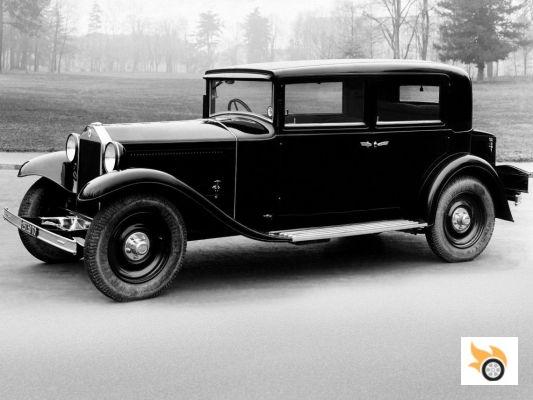
Lancia Artena Berlina four-seater, by Bertone (1931)
With the money he earned, in 1912 Giovanni Bertone opened his workshop in an open courtyard in Turin where he built carriages for racing. In a few years his reputation began to grow, as did his son Nuccio who was born in 1914. The workshop expanded and with it the orders for car bodies for emerging car manufacturers such as Spa, Fast, Scat, Aurea, Chiribiri and Fiat. Giovanni Bertone was 33 years old when the car manufacturer Vincenzo Lancia sought him out to build bodies for his Kappa chassis. In time Giovanni became Lancia's main coachbuilder, creating over the years bodies for about 3,000 of their cars.
And then the bad step. Vincenzo Lancia had seen the future: the monocoque chassis instead of the conventional ladder frame. One day in the early '30s, the car manufacturer met Bertone and guaranteed technical and economic assistance to make a complete change in its construction procedure. Giovanni Bertone was offended by the suggestion that he needed assistance for his business and declined the offer. Lancia's choice to build its own factory to build monohulls and the Great Economic Depression of those years brought the Bertone workshop close to closure, while Nuccio grew up enough and started to help his father in the company.
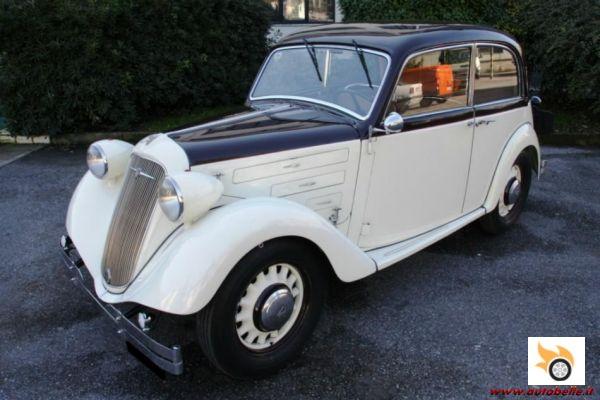
Fiat Balilla, by Bertone (1935)
It was Nuccio, in 1932, seeing in the small and modest Fiat Balilla that he spotted a new opportunity and had the idea of adding six custom body designs to his chassis. He began to travel, showing the designs to car dealers all over Italy and returned from his travels with orders that stabilized the Bertone business and reassured his father. During his travels, Nuccio also went to car races, where he found buyers for his Balillas, and at the end of World War II - as the nation was slowly recovering - he devoted even more time to amateur racing, where he deepened his knowledge of design, car aerodynamics and the advantages and disadvantages of power. In those years the Bertone workshop produced mainly one-offs, sporty bodies built on traditional chassis, but Vincenzo Lancia was right, and Fiat and the other Italian manufacturers began to switch to "monocoque" production.
1952 was the year of the first great opportunity: having to prepare something for the Torino Salon de l'Automobile and without many financial resources, Nuccio Bertone looked abroad and ended up buying a pair of chassis of the English MG TD sports car from a distributor in Rome. The designer Giovanni Michelotti, with the Bertone's who followed the work at his side, made from these chassis a coupé with a long bonnet and a convertible. Both were bought on the first day of the Salon by an American car dealer. The man, wearing a wide-brimmed Stetson and boots, was named Stan "Wacky" Arnolt (Crazy Stan) and burst into the Bertone booth declaring that not only was he going to buy the two cars, but that he wanted 100 of each model.
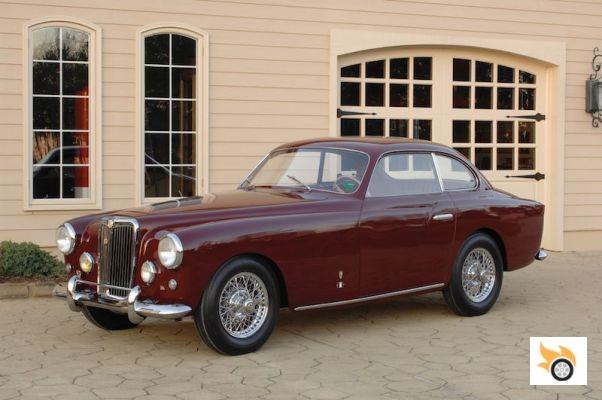
Arnolt MG, by Bertone
Impressed by the unexpected offer, Nuccio tried to explain to Arnolt that the production of these numbers was going to be complicated: the chassis would have to be shipped from England to the port of Genoa, then by train from Genoa to Turin to assemble the bodies, and then back to Genoa to ship the finished cars to the United States. Despite the difficulties Arnolt saw a market for these models in the USA, so Nuccio and Stan "the Mad" signed an agreement and over the next few years Bertone produced 100 or so Arnolt-MGs, until the English builder was unable to keep up with demand and abandoned the chassis supply.
Arnolt and Bertone continued to collaborate until 1959 and thanks to designer Franco Scaglione produced other models of great charm, such as the Arnolt Aston Martin, the Arnolt Bentley and the Arnolt Bristol, the latter produced in approximately 142 units. Working with Stan "the Madman", Bertone demonstrated to the Italian industry that his workshop was capable of handling not only one-offs, but complex productions, and this demonstration of entrepreneurial ability led to a meeting with Alfa Romeo engineer Rudolf Hruska, which changed Nuccio Bertone's life. He turned the small craftsman from Turin into a design legend worthy of a place in the Automotive Hall of Fame since 2006.
Nuccio and Giulietta
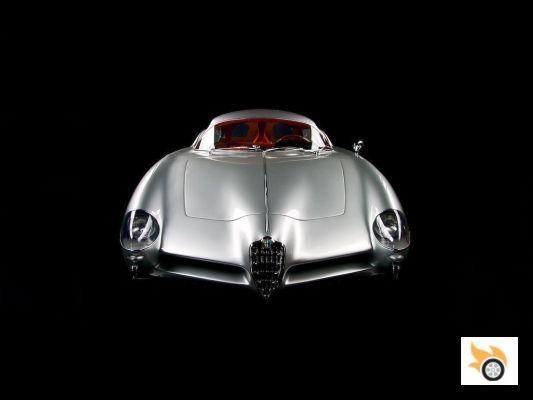
Alfa Romeo BAT 9
The first contacts between Alfa Romeo and Bertone began with the development of three masterpieces: the BAT (Berlina Aerodinamica Tecnica) 5, 7 and 9 designed by Franco Scaglione from 1953 to 1955. These were three prototypes based on the Alfa Romeo 1900, with the aim of studying aerodynamics and reducing turbulence at high speeds. The BATs made Bertone internationally popular, but it was the contract for the construction of the Alfa Romeo Giulietta Sprint in 1954 that convinced Nuccio to move his business to a factory capable of producing thousands and thousands of examples, the Grugliasco factory on the outskirts of Turin, where today the Maserati Quattroporte and Ghibli are built.
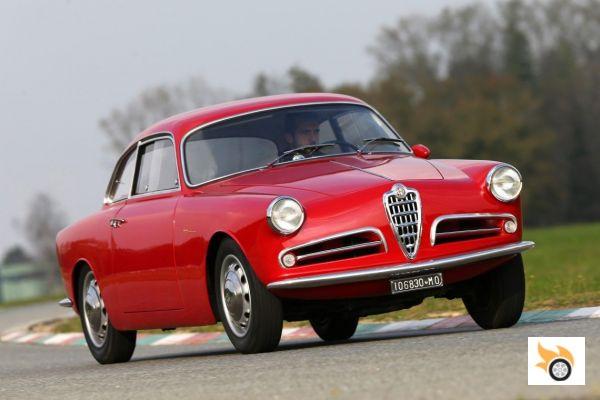
Alfa Romeo Giulietta Sprint Veloce (750)
This story begins with Alfa Romeo which, lacking the money to build the Giulietta series, announced a financing plan through the issue of debt securities. The loan gave the possibility to some subscribers to participate in a draw and have the chance to win a car of the new series. The money was collected, but Alfa Romeo delayed the development of the new model for a year and a half; when the winners began to threaten lawsuits, Alfa begged Bertone to design a sporty GT. And fast. Thus Franco Scaglione's Giulietta Sprint was born, arriving at the 1954 Turin Motor Show where it was unveiled and received hundreds of orders. Over the next 11 years, approximately 40,000 units of this coupé were produced in Grugliasco and the factory expanded to 100,000 square metres, employing 1,500-2,500 workers depending on requirements.
Carrozzeria Bertone began to produce special model bodies, prototypes and one-offs; over the next two decades the company designed, modified or built 43 vehicles and concept cars. In his lifetime Nuccio was responsible for the creation of more than 90 models.
The golden age of Giugiaro and Gandini
At the 1959 Turin Motor Show there was another magical encounter: Giorgetto Giugiaro was 21 years old and working at the Fiat Styling Centre when he visited the Bertone stand and introducing himself to Nuccio showed him his sketches. As Giugiaro himself recalls in an interview in July 2014, at first Bertone doubted that those drawings were made by such a young hand, but he looked at Giorgetto and said: "Send me your idea of a coupé based on the Alfa Romeo 2000 and we'll see if you're capable". The end? Bertone's was not just a test, on the contrary, he presented Giugiaro's designs to the Milan manufacturer and only a year after the meeting the Alfa Romeo 2000 Sprint coupe was in production.
Giugiaro worked for Carrozzeria Bertone until November 1965, when he moved to Ghia, and during those six years he made memorable cars, such as the Alfa Romeo Kangaroo prototype, the Ferrari 250 SWB Bertone Berlinetta, the Iso Rivolta GT 300 coupé and the Iso Grifo. The small Fiat 850 Spider convertible was a sales success and between 1965 and 1973 more than 130,000 units would be produced, of which 1,732 would be manufactured in Spain under license under the name Seat 850 Sport.
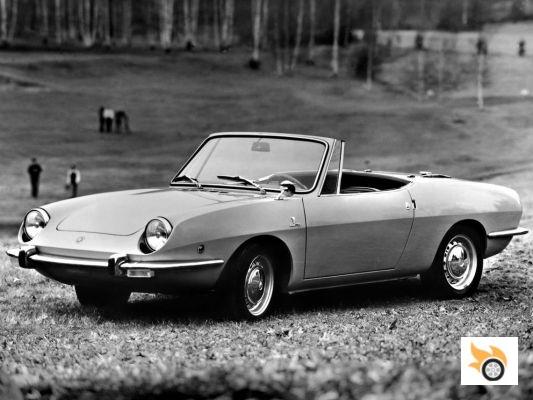
Fiat 850 Sport Spider
Nuccio Bertone was acclaimed at the Automotive Hall of Fame ceremony as "the greatest breeder of design talents in automotive history", because he was not a true designer, one who worked directly on projects, but rather a skilled manager, a catalyst of art and skills capable of "guiding the pencils" of his collaborators and always choosing the best solution, even if "he was never completely satisfied with a new car". In the words of Giorgetto Giugiaro: "Nuccio never designed a single model, but he knew what he wanted, and he always got it".
When Giugiaro left Bertone, Marcello Gandini arrived to replace him, a young man of the same age, but very different in spirit. They are 19 days apart (Gandini is the younger), but Giugiaro and Gandini have shown two very different characters in their careers: while the former is the reigning extrovert entrepreneur of designers, the latter has always been a discreet, silent and almost humble inventor, distant from the public clamour and the desire for fame.
With Gandini, the Bertone style centre moved to Caprie, a small, quiet village on the outskirts of Turin, overlooking the beautiful Sacra di San Michele abbey, symbol of the Piedmont region. It was in this still and distant landscape that in 1966 the most spectacular and outrageous of creatures was born, the first true supercar: the Lamborghini Miura. The chronicles of the time say that when Nuccio Bertone saw the chassis of the Miura, he prayed to Ferruccio Lamborghini to let him design "the perfect shoe to fit on such a wonderful foot". Bertone planned to make about 20 examples of the most iconic supercar in automotive history, Lamborghini hoped to get some publicity and sell 50 cars; the reality of the Miura was an extraordinary success and 764 units were produced.
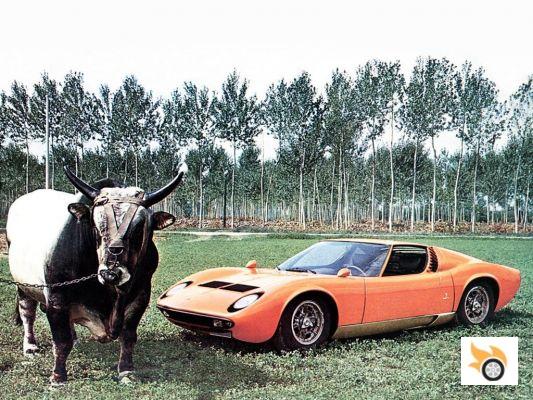
Lamborghini Miura P400 Prototype
The collaboration between Nuccio Bertone and Marcello Gandini gave birth to a cast of cars that would each deserve a separate story; after the Miura came the Lamborghini Marzal prototype and the Alfa Romeo Montreal in 1967, then the Alfa Romeo 33 Carabo of 1968, where two details typical of Gandini's style appeared for the first time: the wedge shape and the scissor doors. Then the Lamborghini Espada, the Iso Rivolta Lele and in 1970 the Lancia Prototipo Zero, the extreme embryo of what was to become a fundamental car in the history of motoring and rallying: the Lancia Stratos.
The long list does not end there: between 1971 and 1972 came - some of many more - models, such as the Maserati Khamsin, the small Fiat X1/9 inspired by the 1969 Autobianchi Runabout prototype and the perfect supercar that ended up hanging on so many walls when you were a child, the Lamborghini Countach, which united the two characteristics of the Alfa Romeo 33 Carabo with lines of extraordinary beauty and charm.
Marcello Gandini's last projects at Bertone were the Volvo Tundra concept and the subsequent Citroën BX, which between 1979 and 1980 brought the typical wedge shape into much more traditional segments. After 15 years working for Bertone, in 1980 Gandini decided to leave his position and start an independent freelance career. Nuccio then entrusted the direction of the style centre to French designer Marc Deschamps, who worked at Bertone until 1995, just a couple of years before Nuccio died.
Bertone the Industrialist and the Beginning of the End
The eighties and nineties of the twentieth century saw Bertone and his company convert to a more industrial production in tune with globalization. The Grugliasco factory grew to a capacity of 70,000 cars a year and prototypes, such as the Lamborghini Athon of 1980, the futuristic Lamborghini Genesis MPV of 1988 and the electric Bertone Blitz of 1992, alternated with more traditional production, such as the Fiat Ritmo Cabrio, the Volvo 780 and the Opel Kadett Cabrio.
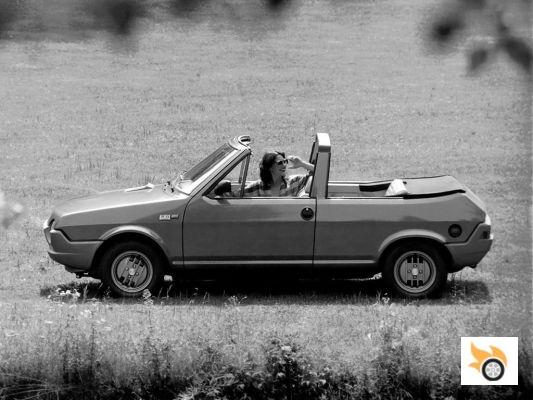
Fiat Ritmo Cabrio
The enthusiasm of the preceding decades gave way to a more mature, entrepreneurial activity and in the 1990s, the firm's reputation was so well known that the CEO of the American car manufacturer General Motors, Jack Smith, wanted to buy a stake in the Bertone company, something between 5 and 30 percent. "Nuccio didn't want it," Paolo Caccamo, the trusted man who ran the Grugliasco factory, said in a July 2014 interview. "It was his company and he said no."
Instead, Nuccio Bertone left the company to his family. In a brilliant career, that was a rare misstep, and we'll soon see why.
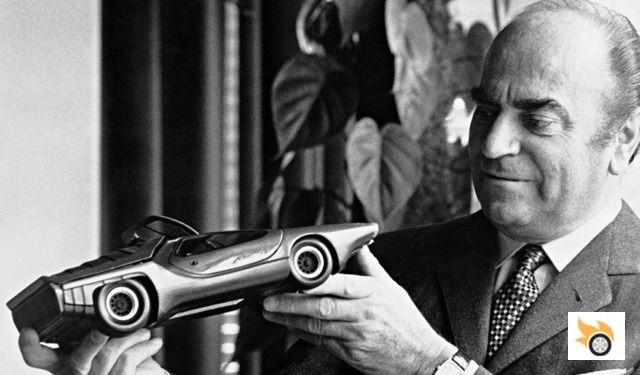
Nuccio Bertone
In the summer of 1996 Nuccio Bertone returned from his usual vacation in southern Italy, where he had a sailboat, with a sick feeling in his stomach. Six months later, on 26 February 1997, just eleven days before the opening of the 1997 Geneva Motor Show, he died.
Paolo Caccamo, the managing director who had been Nuccio's right-hand man since 1976 and who replaced him as President, ordered two hearses to pass through the entire Grugliasco factory. In an interview in July 2014, Caccamo recalls that the workers stopped what they were doing and approached the procession to pay homage to the coffin: "It was a very beautiful gesture. People cried.
At his death, Nuccio Bertone's estate was supposedly divided between his wife Lilli, twenty years his junior, and his two daughters Marie-Jeanne (29) and Barbara (28), the former married to Eugenio Manassero and the latter to Michele Blandino.
The industrial activities consisted of different businesses: Carrozzeria Bertone was the company in charge of the factory and the construction of cars, Stile Bertone was in charge of the design studio and there was also a small activity of production of windscreens and windows for vehicles. According to the reports, the structure of these properties was headed by the Swiss company NuBe (from the initials of Nuccio Bertone), the family's safe - owned 50 percent by Lilli and 25 percent by each of the daughters - which in turn controlled 45 percent of the holding company Bertone SpA (a limited company under Italian law). The rest of the holding company was 20 percent personally controlled by Lilli and 35 percent by the Gracco de Lay family, the family of Nuccio's sister. The holding company Bertone SpA successively controlled 88.8 percent of Carrozzeria, while the remaining 11.2 percent was owned personally by Lilli. With regard to the Stile Bertone design studio, Lilli had 49 percent ownership and the two daughters equally divided the majority stake.
The third generation Bertone goes into the factory
With the succession, Marie-Jeanne, who has a degree in architecture, was appointed vice president of Stile Bertone and her husband financial director of the same design studio. Barbara, with a Master's degree in Business, took the position of financial director of the Carrozzeria Bertone factory and her husband was nominated executive assistant to Paolo Caccamo, who had inherited the position of president of the Carrozzeria after Nuccio's death.
"The end of my relationship with Bertone began when I had the charge of president," says Caccamo, to signify that he and Barbara's husband didn't hit it off at all. "Blandino pretended to be a great production man, but he wasn't: he had no knowledge of how to run a company. Officially, at first, he had no position of authority, but in practice, through his wife whom he dominated, Blandino created a chaos of it all." Caccamo says Nuccio Bertone foresaw a time when his daughters would have led the company, "but neither of them had the personality, the knowledge or whatever. Nuccio wasn't happy with the idea of Blandino leading the company; he didn't see him as an executive."
Opel Astra Cabrio F made by Bertone for GM
At the turn of the millennium, in any case, the factory was still making money: the year Nuccio died 21,000 cars left the Carrozzeria and Bertone had multi-year contracts to make convertible versions of the Opel Astra F and first-generation Fiat Punto. But Caccamo missed his old friend, "a true gentleman", and the relationship with his former boss's family became increasingly strained. The situation finally collapsed when a joint venture with another coachbuilder was proposed for the construction of the first BMW X3. The contract provided for Carrozzeria Bertone to formally become a Tier 2 supplier and Michele Blandino indignantly rejected the deal, for simple reasons of ego: "Absolutely not! We will never be a Tier 2 supplier!" Paolo Caccamo - the man who for a quarter of a century had guided the successful production of the Bertone factory - resigned in disappointment shortly afterwards.
To replace Caccamo, in the spring of 2000, an executive headhunter found Bruno Cena, a 57-year-old production engineer who at the time was head of the D platform at Fiat and had been responsible for the development and tuning of the dynamic and brilliant Alfa Romeo 156. After interviews and meetings with Barbara and Lilli Bertone, Cena was hired as general manager and promoted to CEO of Carrozzeria Bertone, in the meantime Michele Blandino had been proclaimed commercial director of the company.
Opel Astra Coupe Bertone
Bruno Cena - as he himself says in a July 2014 interview - found a not very well organized company, lacking firm guidelines and with 400 Opel Astra coupes parked outside the factory, unfinished due to production problems. "Everything was a bit confusing, because there were different ways of thinking and internal conflicts between the different departments. I solved the problems, made everything work and reduced costs. I simply did my job," is his summary.
In 2002, the Carrozzeria Bertone factory built 34,991 Opel Astra, both coupe and convertible, and at the beginning of 2003, 150 cars were leaving its gates every day, with workers working in two shifts. As the commercial end of the models approached, in the autumn of the same year production was cut by less than half and 700 of the 1,600 or so workers were put on temporary lay-off from July to November, with the remainder working every other week.
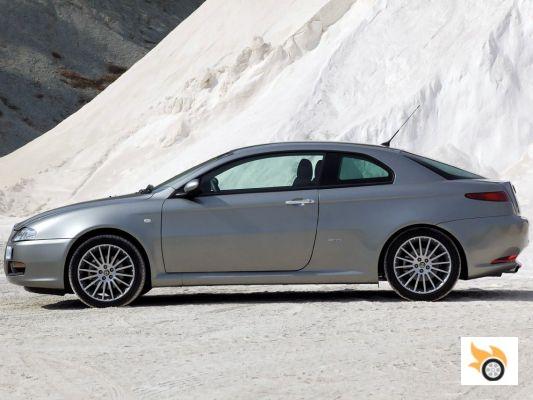
Alfa Romeo GT
New production contracts had to be found and these were not forthcoming. Bruno Cena began to feel the pressure on his shoulders: thanks to his deep knowledge of the technical basis of the Alfa Romeo 156, he proposed to Fiat a coupé variant on the same platform inspired by the Lancia Beta HPE, that is, a sporty model with 4 seats, a hatchback and a large boot for the needs of a family. Thus was born the Alfa Romeo GT, whose design and development were carried out by Bertone, but when the time came to sign the production contract, Fiat decided to build the GT in its Pomigliano d'Arco factory, where the Alfa Romeo 156 was also made.
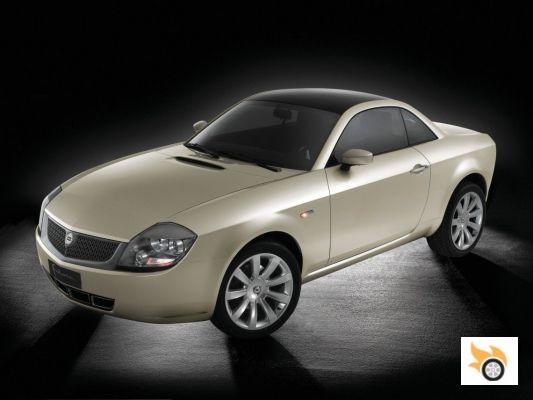
Lancia Fulvia Coupé
Cena also followed the 2003 Lancia Fulvia concept project, which never made it to production, and he followed the Alfa Romeo Brera, whose contract had such bad economic conditions that the CEO withdrew Bertone's offer and so production went to its competitor Pininfarina, which lost a lot of money in the deal. With the assembly line grinding to a halt every day, the nervousness grew: "Management started to expect things I couldn't do," Cena says. "I wasn't the commercial director, my job wasn't to bring new contracts for the company, but some people were demanding that I bring new contracts because of my contacts at Fiat. The head of the commercial department, in any case, was Michele Blandino."
Cena resigned in October 2003, slamming the door: "A part of the Bertone family showed deep ingratitude and was disrespectful" says Cena, excluding Lilli from this statement. Although he saw the era of the coachbuilders coming to an end, the CEO had done well during his three years at the helm of the factory. "When I left Carrozzeria Bertone in 2003 the situation was prosperous: the company was making a lot of money, turnover was close to €500 million a year and we had something like €125 million in cash, available for investment and development" says Cena. "Of course there were high fixed costs in maintaining the factory, but I don't know where the debts came from in the following years, because everything was owned by the company and there was no exposure to the banks. On the contrary, it was the banks that offered us money".
After Bruno Cena's departure, Lilli appointed herself CEO of the Carrozzeria Bertone factory, while the Stile Bertone design studio, with its 200 employees, had less work than before, but continued its activity without problems. In the spring of 2005 production of the Astra ended and with it the twenty-year relationship between Bertone and Opel, with General Motors announcing that it would build all variants of the next generation Astra in its own factories.
In 2006 Carrozzeria Bertone - a factory that had production capacity for 70,000 cars a year - built the mere 2,000 units of the Mini Cooper S John Cooper Works GP, a special series of the small Anglo-German that the BMW group assigned to the Italian coachbuilder as compensation for the sales fiasco of the BMW C1 scooter. Bertone, in fact, had won the contract in 1999 for the construction of this scooter that could be driven without a helmet, but during the four years of its marketing sales were well below the expectations raised by Munich, receiving the Bertone factory the greatest economic damage of the fiasco.
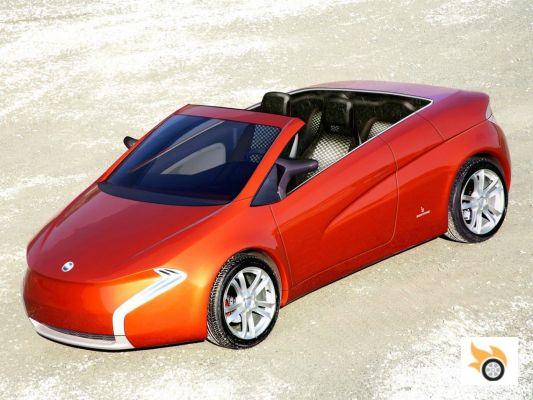
Fiat Suagnà
During that year the Mini were not the only ones to leave the Carrozzeria, because in March, Barbara and her husband, Michele Blandino, resigned from their positions in the company, declaring to the press that they did not agree with the direction Lilli was giving to the family business. The breaking point allegedly came in relation to the project of a new Fiat convertible, a model based on the Grande Punto that the Italian manufacturer was studying the feasibility of. Stile Bertone in 2006 presented its offer in the form of the Suagnà prototype and Lilli - aware of the vote for her husband Nuccio - even declared herself ready to finance the construction of the convertible with 150 million euros from her own family, saying: "We have never bought expensive yachts, so we can afford to finance this project".
In the meantime the assembly lines at the factory were at a standstill and reports at the time say that only 12 million euros of Carrozzeria Bertone's cash remained. Negotiations with Fiat were getting longer and more difficult by the day, because in those years the Turin-based automotive group was going through a tough time of restructuring and cutbacks under the leadership of Sergio Marchionne. Blandino was replaced in his position as sales manager by personnel director Vincenzo Tutino, while the Fiat convertible project was turned into a Lancia, but the result didn't change anything: in the end Fiat decided to cancel the project and not to give an heir to the Punto Cabrio.
If Marchionne saw no future for the small convertible, the same cannot be said for the factory in Grugliasco. There, the Italian-Canadian CEO wanted to build niche cars, albeit using only half of the 1,300-strong workforce. The proposal, however, was rejected by the unions and the coachbuilder, and so relations between Fiat and Bertone were finally severed.
In May 2007, Lilli rehired her daughter Barbara as managing director of Carrozzeria, hoping that at least she could attract new contracts, but the reality was that the carmakers finally had the technical capabilities to build specialized low-volume models on their own assembly lines and that the bodybuilding industry was collapsing for good.
Fight for survival
Six months after Barbara's return, in fact, Bertone Carrozzeria filed for receivership to protect the company's assets and its 1,317 employees from creditors. Instead of declaring bankruptcy, the court appointed three independent directors with the task of giving the factory a future.
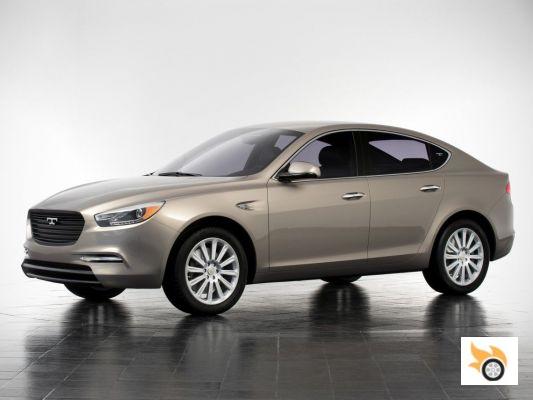
De Tomaso Deauville
The first offer came from Gian Mario Rossignolo, a former Lancia CEO who proposed to buy the plant for the symbolic price of one euro, keep 990 of the workers and then build three luxury models (under the DeTomaso brand) with a production target of 9,000 units a year. Despite the idea of selling the family business and the dubious financial sustainability of the plan, Lilli, Barbara and Marie-Jeanne signed a memorandum of agreement under the condition of being part of the new company.
When everything seemed to be heading in a clear direction, on New Year's Eve, 31 December 2007, Lilli changed her mind and - without telling her daughters - closed a deal with Domenico Reviglio, the founder of an automotive testing and certification company called Gruppo Prototipo; the deal provided for complicated shareholding transfers of both Carrozzeria and Stile, and then a new company with 305 employees that would have built a handful of electric cars, light commercial vehicles and trucks. From around 1,300 employees and 70,000 cars a year the leap already seemed ridiculous, but the real disaster is in the details, and the real problem was that Lilli had agreed to this deal without realizing that most of the shares in Stile, Carrozzeria and the Bertone holding company - which had meanwhile been included in the receivership, because she had the majority stake in Carrozzeria - did not belong to her directly, but were controlled by her through the complex shareholding structure.
Barbara and Marie-Jeanne accused the mother of making deals with shares that were not hers and of being incapable of discernment, manipulated by her advisor, the lawyer Vito Gianfranco Truglia. As for the shareholding quotas, the court gave reason to the daughters; Lilli dismissed Barbara from her position as general manager, claiming to be the president of the factory; Barbara claimed the same position, insisting that it was still hers; a total confusion. Despite all the family squabbles, legal documents revealed that Reviglio's only capital possessions had been handed over by Lilli and the receivership counsellors refuted Rossignolo's plan, he Reviglio's and some others.
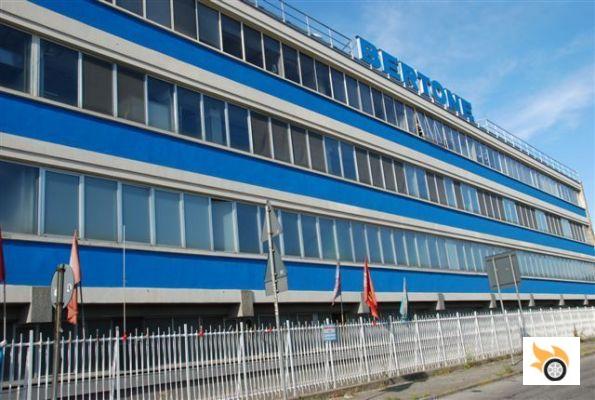
The old Grugliasco factory before changing its facade for the Maserati facade it has now.
At this point, with the failure closer every day, Fiat played its cards: investment of 150 million euros in three years to build luxury cars in the Grugliasco factory and re-employment for the 1,100 workers who still remained; on August 6, 2009 the Ministry of Economic Development accepted the proposal and the unions reached an agreement with the Italian manufacturer. The plant remained silent until the end of 2012, when the first sixth-generation Quattroporte sedans started to come out of the new Maserati facade. Despite a value estimated by technical advisors of at least €35 million, Fiat paid €20 million over five years for the entire factory area and the money went to cover Carrozzeria's debts.
Suicidal design
Carrozzeria Bertone had ceased to exist after a long agony, only Stile Bertone remained, which being a separate company had no connection with the collapse of the factory. But the legendary Caprie design studio, the brainchild of Nuccio Bertone and Marcello Gandini, was not having a happy time either. The company had not produced a profit since 2005 and under the too-light guidance of its vice-president Marie-Jeanne orders were becoming increasingly scarce. With the factory definitively lost and the centenary approaching every day, Lilli turned his attentions to the Stile Bertone.
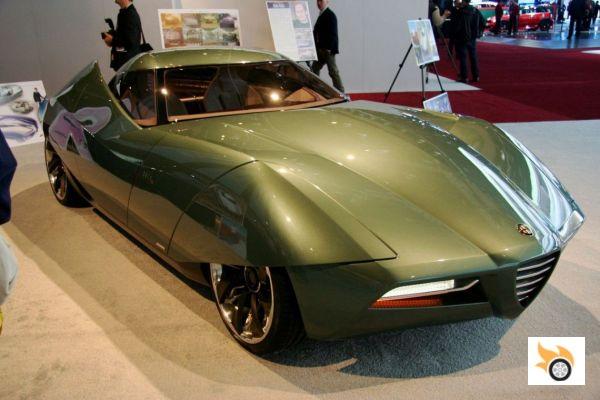
Detroit 2009: Bertone BAT 11
For the 2008 Geneva Motor Show the head of design, David Wilkie, had prepared the unique Alfa Romeo BAT 11, a concept based on the mechanics of the Alfa Romeo 8C Competizione that had been commissioned and financed by an American dentist who already owned the BAT 9 designed in 1955 by Franco Scaglione. Lilli, claiming that the company was fully occupied with restructuring, cancelled Stile's participation at the show; again, without saying anything to his daughter Marie-Jeanne. The vice-president counterattacked by organising the presentation during the same days of the Salon, but in the centre of Geneva, in the picturesque setting of the Bâtiment des Forces Motrices, this last episode of family quarrels being what caused David Wilkie to leave. In his place came the young American Jason Castriota, with whom Marie-Jeanne made her swan song at Stile: the "one-off" Bertone Mantide presented at the Shanghai Motor Show on 30 April 2009.
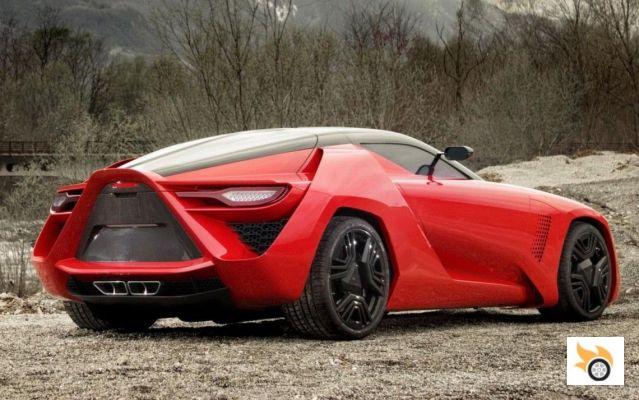
Bertone Mantide
In July 2009, both daughters gave in to Lilli's pressure and sold their shares in Stile Bertone for a rumoured price of 2.5 million euros, thus disappearing from the scene for good. In the meantime, Nuccio's widow also bought the Bertone trademark for 3.5 million euros, which being part of Carrozzeria's assets was under the control of the receivership, and founded a new company called Bertone Cento (hundred in Italian) with a man named Marco Filippa. Reports at the time describe him as the orchestrator of the acquisition of Stile by Lilli, however Filippa was appointed CEO of Bertone Cento and in an interview described his role as "not being a designer, not an engineer, not a financial director, but a global corporate coach". However the significance of this statement is not the darkest point of Marco Filippa's appearance on the scene, because soon after Marco also became co-owner of the holding company Bertone Cento, after giving Lilli a money or service that has never been disclosed.
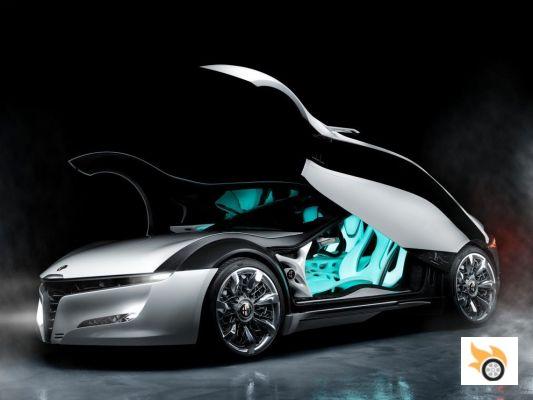
Stile Bertone Alfa Romeo Pandion
The last head of design at Stile Bertone was Michael Robinson, an American who had worked in Italy for 30 years and had headed the Fiat and Lancia design centre. Since in April 2009, when he joined the studio, "there were zero clients, not a single project", he went to China to look for new commissions. There, in three years he found work worth some 35 million euros and when the studio's activity seemed to be reviving, Marco Filippa, who had meanwhile cleared out all the previous management, ordered that all financial transactions had to pass through his desk. During his years at Bertone, Robinson created the 2010 Alfa Romeo Pandion and the Bertone Nuccio prototype for the brand's centenary, in fulfilment of Lilli's promise to her husband.
For her part Nuccio's widow continued on her mission to recover as many pieces as possible from the Bertone estate: she paid 2.4 million euros for 84 prototypes already part of the marque's museum, while the six most valuable concept cars - the 1967 Lamborghini Marzal, the Lancia Stratos HF Zero, the Chevrolet Testudo, the 1974 Lamborghini Bravo, the 1980 Lamborghini Athlon and the 1978 Lancia Sibilo - were auctioned by court order in May 2011.
The moral of this story
All 84 cars purchased by Lilli returned to Caprie's in-house studio museum. Despite the new Chinese commissions, from summer 2013 the Stile company stopped paying bills and salaries. In a July 2014 interview, Robinson asks simply and bluntly, "What happened to the money?". Towards the end of 2013, Robinson received his pink slip and when asked by a journalist after his departure for a comment on the Bertone situation, Robinson replied, "Having turned this page, I can't afford to be dragged into this vale of tears." He then added, "The real perpetrators (of this disaster) should be hung from a tree."
In June 2014 the Caprie museum and offices were put up for sale and today, behind the closed gate, a guardian watches over the cars and deserted buildings. Next July the sentence will come (editor's note: the sentence has already arrived, and next September the car collection and the "Bertone" brand will be put up for auction).
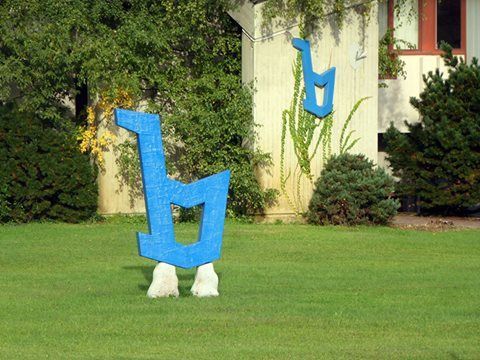
The Piedmontese of Turin have a reputation for being conservative in judgments and cautious in opinions, to confirm this, former CEO Bruno Cena gives us the wisest retrospective: "We should have had the opportunity to discuss rationally, calmly, the objective fact that the coachbuilders were becoming historically obsolete. We could not continue in the same way we used to operate. But this deliberation should have taken place when things were going well. Bertone had strong social responsibilities and the shareholders should have taken drastic, if unpleasant, action. Clear-headed actions. However, it was impossible to talk about selling the company or turning it into a profitable supplier". On the other hand "you have to understand the owners: when you are sentimentally attached to a name, a symbol, you think differently. Lilli Bertone made a promise: better to fail than to sell the company. The positions of the other members of the family changed every day, overnight. It was all very contradictory and temperamental, totally lacking any rational basis".
Some kind of rationality came on 21 December 2012, when the court of Turin ruled on the civil action for damages brought in 2010 by the Bertone company in receivership against Lilli, Barbara, Marie-Jeanne, Michele Blandino and the other administrators of the Carrozzeria. The civil court ordered Lilli to pay 7.5 million euros in damages, of which 4.9 million would have to be shared with her daughter Barbara, a fraction of the independent directors' claim of 46.6 million euros. In a 144-page sentence the judges accused the widow of "having led the company to collapse, acting without an industrial plan or interest in keeping the company alive" and much more, 144 pages that describe without mercy or poetry the consequences of an oath and the failure of so much beauty.
Article originally published in March 2015, retrieved for Pistonudos
























